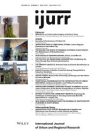Despite developments within planning theory challenging the ideal of the rational master plan it may be argued that there is still use for the production of knowledge through analysis in planning. However, the cultural complexity of today’s planning contexts, and a move towards governance and entrepreneurial policies, makes it difficult to make places, to achieve social welfare and sustainability. Traditionally, the analysis of places has been done by architects and planners focusing on physical form, having an essentialist perspective of place resembling the theory of genius loci. In Norway, the planning authorities refined this methodology in the 1990s. This approach is, however, not in tune with a progressive view of places as multiple and dynamic social constructions, and may be accused of ‘symbolic violence’. If one is to take this view seriously and still be able to make plans, planning must also be based on other types of knowledge. In this article I argue for a socio‐cultural approach to reveal social representations and practices that make a place. I use the case of place‐making in Sandvika, a suburban ‘minicity’ outside Oslo, as an example of how a constructivist understanding differs from and may supplement an essentialist approach.
Details
Written by:
Per Gunnar Røe
Digital Object Identifier (DOI)
10.1111/1468-2427.12113
About DOI
Read full article as PDF
Read full article as HTML
See the references for this article
